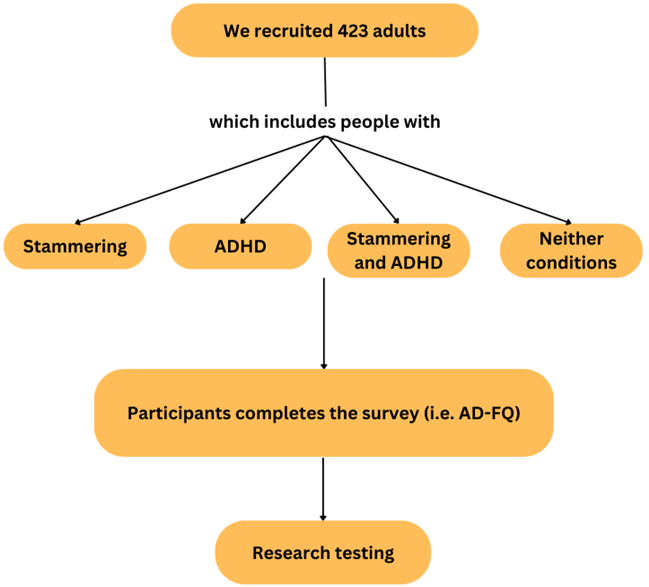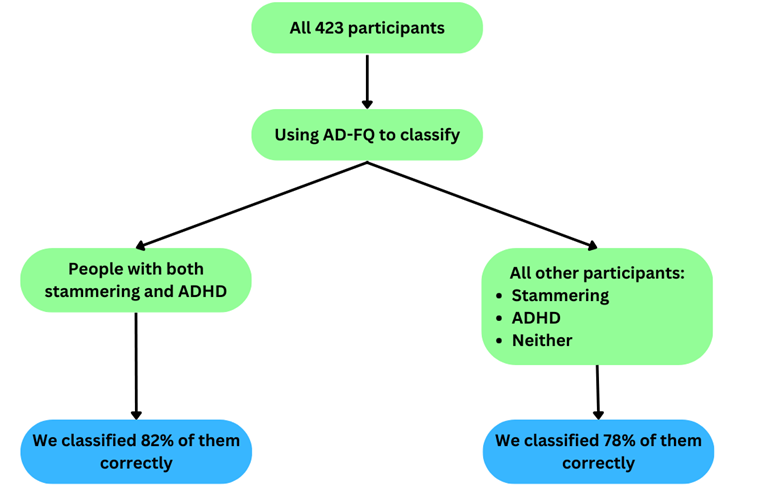Identifying Stammering & ADHD: Study Findings
Researcher Robin Lau tells us about findings from his recent study that has helped to identify ADHD in people who stammer.
Studies have found that people who stammer are three times more likely to have a diagnosis of Attention-Deficit and Hyperactivity Disorder (ADHD) than people who don't stammer1. Does this mean people who stammer and people who have ADHD have similar experiences? This is what I investigated when I was studying at University College London (UCL) in 2021.
What is ADHD?
To start with, a quick explanation of what ADHD is: it is a condition where people show patterns of inattention and hyperactivity. This can affect their development and day-to-day life.
How are stammering & ADHD similar?
Stammering and ADHD have a lot in common. For example, like stammering, more men are diagnosed with ADHD than women2. In most cases, both stammering and ADHD emerge at around three years old3. Also, roughly half of the people who stammer experience some features of ADHD4. Some of these features are: difficulties focusing on a task, multi-tasking and controlling emotions, as well as often being creative, spontaneous and energetic.
How can features of ADHD affect people who stammer?
Children who start stammering usually receive speech and language therapy to help them with communicating. However, children who also have features of ADHD respond less well to speech therapy and need more therapy sessions4. This is why children who stammer and have features of ADHD need more support.
Identifying stammering & ADHD
Now, we know that people who stammer and have features of ADHD have more difficulties. How can we give them more support? Along with other researchers at UCL, I developed a survey to identify if people have stammering and ADHD. If we can do this, we can provide them with the right support earlier.
What is the survey about?
The survey is called the AD-FQ, which stands for The ADHD and Fluotypy Questionnaire. Some example questions in the survey are "I tend to be easily distracted" and "I tend to repeat parts of words", to which people answered yes or no. A higher score on the survey indicates the person has stronger features of stammering and ADHD.
More than 400 adults completed the survey. This included people who stammer only, those who only have ADHD, those who have both, and those who have neither. See Fig 1 below for more detail.

What did we find?
First, we wanted to see if people score differently according to their diagnosis. We found that they did. Those who stammer and have ADHD scored on average much higher than anyone else.
Second, we wanted to see if the survey could identify people with both stammering and ADHD from all other participants. It correctly identified 82% of those with both stammering and ADHD. This means that for every 10 people with stammering and ADHD, the survey can accurately identify 8 of them. It also correctly identified 78% of all other participants. See Fig 2 below for more details on this.

(To get academic for a minute, for those of you familiar with 'ROC curves' we also calculated the area under the curve (AUC) for our survey. The AUC can help us see how accurate our prediction is. AUC figures between 0.7 and 0.8 is considered good, and above 0.8 is considered excellent. Our survey's AUC was 0.87, which means it is excellent at predicting those with both stammering and ADHD.)
What do these results mean?
Our survey accurately identified those with both stammering and ADHD from all other participants. This could help people who stammer find out if they have features of ADHD so they can access support to manage those features.
What's next?
We carried out our survey on adults, but it might be even more useful for children. Children who start stammering who also have features of ADHD experience more difficulties and respond less well to speech therapy. We want to make sure these children can manage ADHD so they can respond better to therapy. This can then help with their communication and improve overall quality of life from a young age. Our next steps will be to adapt the survey so it can be understood by children. We also want to test its accuracy for predicting stammering and ADHD in children.
If you would like to get involved in stammering research, why not attend a STAMMA Research Arena online event? There you can help shape future projects. See Take Part In Stammering Research to see what studies are happening now.

































